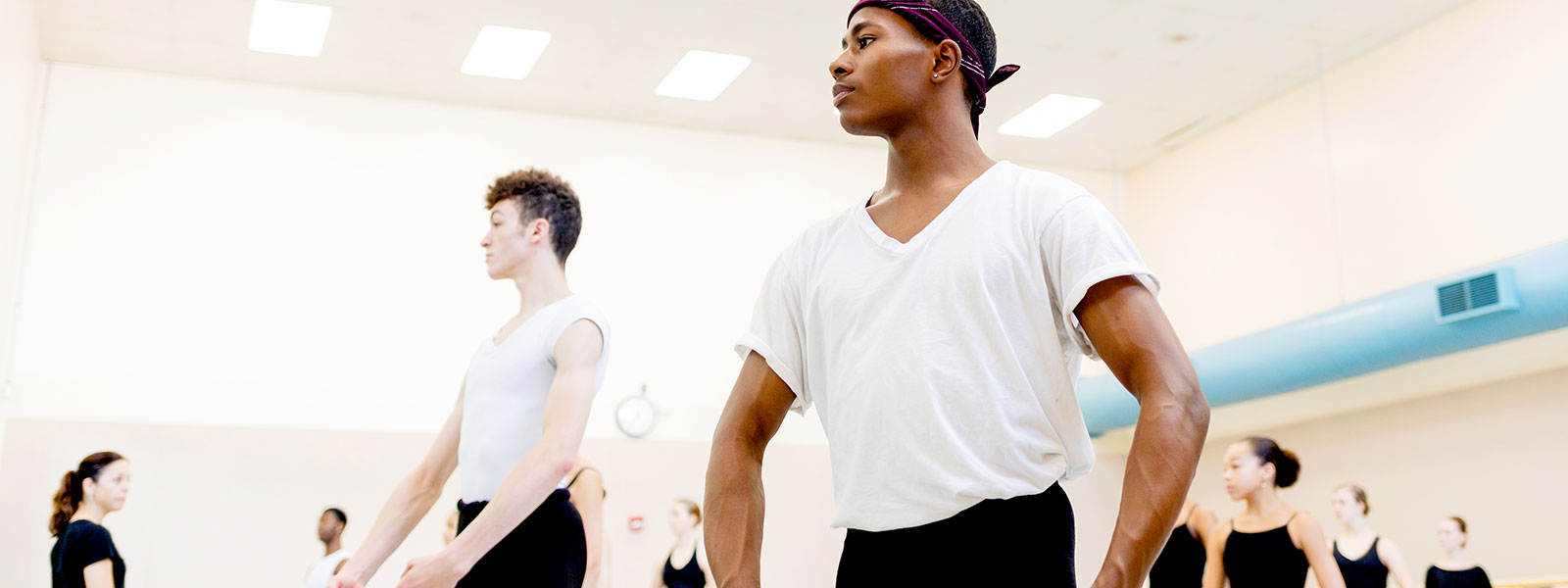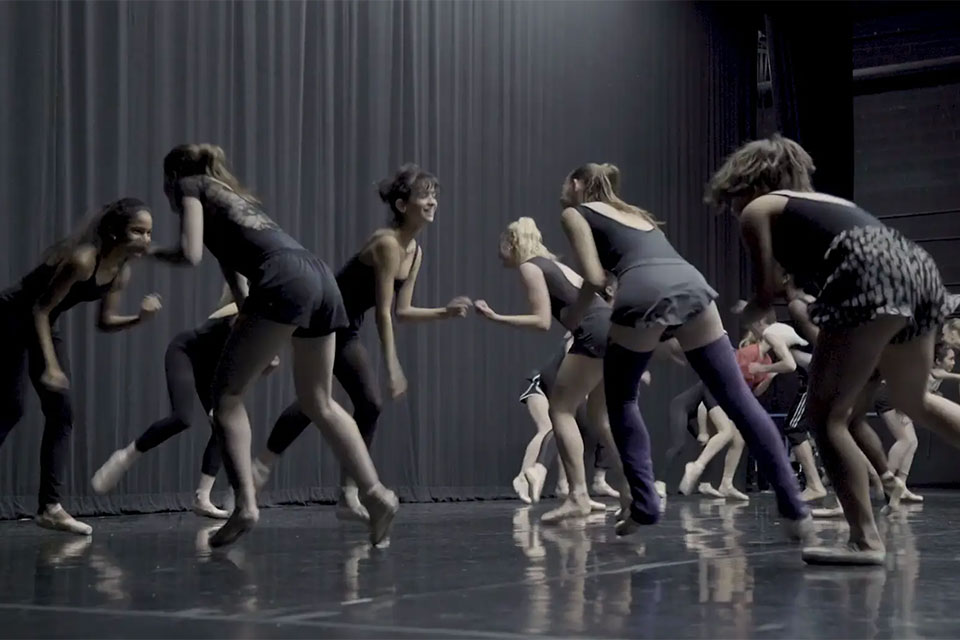Creative laboratory inspires dancers to explore
Choreographic Institute pushes established and emerging artists past boundaries
UNCSA is a campus where art is not just performed, but created. While traditional conservatory models focus on perfection of skills, numerous programs on campus are working to simultaneously foster new works while giving students the opportunity to work with established and emerging leaders in their respective art forms.
One such initiative—the School of Dance’s Choreographic Institute—provides choreographic residency opportunities for professional choreographers each summer, where they collaborate with dance students to create and perform new works. The result is a creative laboratory that introduces UNCSA dancers to new artistic perspectives from across the globe.
“The Choreographic Institute is an opportunity for choreographers to come (to UNCSA) to experiment, play, and push past what we’re already making,” says Andrew Harper, a UNCSA alumnus and one of four choreographers who took part in the Summer 2019 Choreographic Institute.
The institute looks for emerging choreographers who exhibit a strong choreographic voice and exceptional promise with at least five years of choreographic experience. For the Summer 2019 session, more than 130 applications were submitted for the four available spots.
The institute is beneficial for both students and choreographers. “I’ve never worked with this many dancers for a piece before—I think this was double the number,” says Marika Brussel, a contemporary ballet choreographer whose works have been commissioned by ARC Dance, Columbia Repertory Ballet and Berkeley Ballet, among others. “So right away, it was a big challenge for me. By embracing that challenge and talking to the other choreographers, I feel like my work has developed in unexpected ways.”
Choreographer Alexander Brady agrees that the institute provides challenges that foster professional growth. “It’s good to test yourself and push yourself because that’s when interesting things happen,” he says. Brady, an alumnus of the Boston School of Ballet and the School of American Ballet, danced professionally with the Joffrey Ballet, Miami City Ballet and Twyla Tharp Dance before beginning his career as a choreographer.
Ja’ Malik, a Harlem-based contemporary choreographer and former member of the Cleveland Ballet, Oakland Ballet, Ballet Hispánico and others, also sees the benefits for student participants. “Working with us as professional choreographers gives them a chance to explore their artistry, as well as their technical abilities.”
The institute is supported in part by a $250,000 pledge from Board of Trustees member Noel “Skip” Dunn and former Board of Visitors member Mia Celano, and gifts from numerous other donors.
The choreographers agree that the Institute is a needed and worthwhile addition to the dance landscape.
“I was excited about coming here, but I am a million times more excited now that I have done it,” Brussel says. “It’s been the best experience of my life as a professional.”







